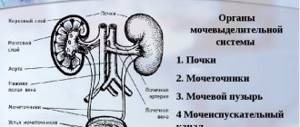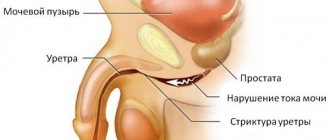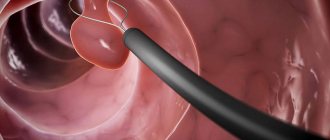Bougienage of the urethra is the insertion of a special catheter into its cavity. The manipulations differ from the usual catheterization procedure in the special shape of the bougie. During the procedure, the urethra expands at the site of its narrowing. Bougienage is used to treat pathologies accompanied by impaired urine flow. Manipulations are also effective in the diagnostic field.
Proper use of bougies and preparation for the procedure will help to obtain the desired result. Bougienage is carried out by an experienced physician. The method is proven and effective in treating urethral stricture (narrowing). It is approved for use on patients of both sexes, even children. A one-time manipulation will not completely get rid of the disease, so bougienage is carried out several times until the desired effect is obtained.
general information
Bougienage is a fairly ancient technique for solving urinary problems. The first mentions of manipulation were found by scientists in the Egyptian pyramids. The procedure is carried out using special devices (bougies of various shapes, sizes, materials of manufacture).
Against the background of various negative factors, the lumen of the urethra narrows, which prevents the normal passage of urine. During bougienage, a bougie is inserted into the urethra, which presses on the inner surface of the canal, gradually expanding it.
You cannot insert a bougie that corresponds to the diameter of the normal lumen of the excretory canal. Doctors carry out a whole range of procedures, the interval between them is at least eight hours.
Patient reviews
Men say that bougienage of the urethral canal is an unpleasant procedure, but tolerable. Many explain that using this method they squeezed out ulcers from the paraurethral glands, which cannot be affected by regular massage, and administered medications to treat infections. Urination often does not change, although leakage goes away. Also, judging by the reviews, massage with a catheter is more painful than with a bougie.
According to urologists, the procedure is prescribed strictly according to the results of urethrography, only for strictures and gives only a temporary effect.
Women undergo bougienage less often, so there are very few reviews. Usually this procedure is prescribed to them for postpartum injuries and complications after gynecological operations. As a rule, girls tolerate such manipulations more easily. The procedure itself is also simpler, faster, and fewer sessions are prescribed. The discomfort is quite tolerable, although anesthesia is sometimes required. Like men, women complain that after therapeutic bougienage, strictures return after some time.
In general, bougienage is a bloodless method of identifying narrowing and temporarily restoring the diameter of the urethral lumen. The procedure should only be performed by a competent specialist, as otherwise complications are possible.
Indications and contraindications
The bougienage procedure is carried out when there are suspicions of scarring in the urethra or narrowing of the excretory canal; examination of the walls of the urethra is necessary. The technique is also effective for already diagnosed diseases.
Pathologies are formed against the background of many negative factors:
- traumatic injuries to the pelvic area;
- course of sexually transmitted diseases;
- traumatic diagnostic procedures, for example, catheter installation;
- surgical interventions in the area of the excretory system;
In children, a narrowing of the lumen of the urethra is observed against the background of congenital pathologies in the structure of the excretory canals.
Find out what an angiomyolipoma of the right kidney is and how to get rid of the formation.
Effective methods of treating Itsenko-Cushing disease in men and women are collected in this article.
Bougienage is carried out in the following cases:
- there are no concomitant diseases of the urinary system;
- the area of narrowing of the urethra is short;
- the narrowing of the urethra is extensive, but the entire area is uniform (the diameter of the excretory canal is almost the same along its entire length);
- there is no possibility to use another method of treatment or diagnosis.
There are quite a few contraindications to bougienage, the main one being the presence of formations in the excretory system. A bougie can disrupt the integrity of the tumor and spread malignant cells throughout the body (along with the bloodstream), which threatens the health and life of the patient.
The procedure is contraindicated in the presence of certain diseases:
- renal failure;
- inflammatory process in the urethra, prostate;
- cystitis, pyelonephritis;
- inflammation or pinching of the glans penis;
- serious traumatic damage to the excretory canal;
- inflammation of the testicles and appendages.
Important! The appointment and implementation of the procedure is carried out only by an experienced specialist who will help you choose the right bougie and carry out the correct treatment or diagnosis.
When is bougienage required?
Urethral dilatation is not prescribed just because the patient or specialist wants it. The procedure is quite complex and requires increased concentration. If an inflammatory process or injury occurs in the groin area, such a procedure cannot be avoided. But let us pay attention to the fact that not every inflammation requires such drastic measures.
The procedure is quite complex and requires increased concentration.
If treatment for urethritis or another disease was carried out incorrectly or the patient did not follow the doctor’s recommendations, the tissue of the urethral canal may become covered with scars. Because of this, ingrowth occurs incorrectly and unevenly. As a result, areas appear in the urethra that do not allow urine to pass normally. There is difficulty urinating, discomfort and pain. The saddest thing is that this problem will remain forever if you don’t take action. To alleviate and eliminate such troubles, it is recommended to carry out bougienage.
Ailments that provoke serious inflammation contribute to the appearance of problems in the structure of the urethra. These include:
- cystoscopy performed incorrectly or without following safety regulations;
- presence of stones. It is especially difficult for those whose stones have begun to move through the urethra. If the size and shape are large, then they can get stuck in the urethra. Such an incident makes it impossible to empty the urinary tract and causes pain. Rarely, there are cases when, due to reluctance to go to the hospital, problems arise that require surgical intervention;
- the presence of gonorrhea or balanoplastitis;
- problems after surgery on the pelvic organs or genitals;
- a separate group of patients – injuries of the groin area.
Bougienage progress
But the use of this technique not only helps to clear the passage for urine outflow. With its help, doctors expand the canal to the required size and diagnose diseases that occur in the bladder and canal. Localizing structures are established. It is also important that disorders in the urinary system affect a person’s sex life. But the use of technology helps to normalize and eliminate such a problem.
Types of bougies
Currently, all devices are divided into two types, depending on the material of manufacture:
- metal;
- synthetic.
The first type of bougie has been used for many centuries; in modern medicine, synthetic products are often used. This is due to the high traumatic nature of metal bougies, the possibility of puncturing the urethra (often observed in representatives of the stronger sex), and excessive pressure on the walls of the excretory canal.
Synthetic devices that are elastic are often used. Such products do not injure the urethral mucosa, and the risk of puncture is minimized.
Devices for bougienage have different shapes, depending on their purpose:
- straight, curved. The first type of instruments is intended for bougienage of the fair sex; a curved bougie is suitable for diagnosing or expanding the cervical canal in men;
- meek, long. Designed for good manipulation at different depths of the urethra. Short bougies are repurposed for procedures in women, long ones for men;
- bougies without extensions or with extensions on specific parts of the product.
How to prepare: advice to patients
Proper preparation for bougienage will help prevent the development of complications and make the process as comfortable and effective as possible. A few minutes before the procedure, the external genitalia are treated with an antiseptic solution to prevent infection by various infections.
The basis of preparation is preliminary analyses:
- the number of scars in the urethra is revealed;
- the patient undergoes a general analysis of urine and blood;
- doctors determine the exact location of the narrowing of the urethra;
- The exact diameter of the excretory canal is calculated.
Only after receiving a complete clinical picture does the physician begin the procedure itself.
How is the procedure performed?
The different anatomical structure of both sexes forces doctors to perform bougienage in several ways, using specific devices.
Among women
Given the anatomical structure of women (the urethra is shorter and wider than that of men), the fair sex easily tolerates the procedure. There are very few complications in women. To treat ureteral stricture, in most cases, metal bougies are used, which are equipped with an oval thick tip. During bougienage, doctors use several types of products of different thicknesses.
The procedure is carried out in several stages:
- the patient lies down in a special chair (on her back), the instruments are lubricated with Vaseline;
- a rod is inserted into the urethra, the diameter of which is much smaller than the thickness of the lumen of the urethra;
- after some time, the rod is removed and another bougie of larger diameter is inserted;
- the number of such device changes depends on the characteristics of the patient’s disease. The last bougie is held in the urethra for several minutes, then slowly pulled out.
It is recommended to repeat the procedure no earlier than 12 hours later, but no later than 24 hours. During subsequent manipulations, the thickness of the first rod should match the thickness of the last bougie that was used last time. If the process becomes difficult, use rods of the same diameter twice in a row. In this case, the procedure is carried out at least five times.
In men
The stronger sex is more difficult for women to tolerate the procedure. If iron rods are used, it is worth considering that the male urethra is shaped like an “S”. The further the narrowing is located, the more difficult the treatment process.
Dilation of the urethra in men occurs in several stages:
- the patient lies on his back, the doctor inserts a curved bougie into the urethra. Often a metal rod with a synthetic tip is used;
- thickening of the excretory canal is carried out using slow clockwise scrolling;
- the bougie is brought to the bladder;
- After the procedure, the urethra is treated and washed with an antiseptic.
If during bougienage a bougie is used, which expands under the influence of liquid, then the balloon is kept in the narrowing area for up to 10 minutes. To restore normal urine flow, a man will need up to 15 procedures. The treatment process itself is unpleasant, but tolerable. If necessary, a local anesthetic is administered.
Dilation of the urethra in women, men and children
For diagnosis and therapy, a straight-shaped rigid bougie is used.
The specialist treats the tube with Vaseline for easy penetration, injects medication with an anesthetic into the urinary canal, and then places the rod in the urethra to the point of narrowing. After some time, the bougie is removed and the urethra is treated with an antiseptic substance. After 8-48 hours the procedure is repeated. In the next session, the therapist may use a wider bougie. To completely dilate the urethra, 3-5 procedures are required.
In men, the procedure takes a long time and requires a careful approach due to the anatomical features of the organ. The manipulation is carried out using rigid or flexible bougies, the latter are considered more comfortable for the patient. Rods made of synthetic material are often used, at the end of which there is a special cylinder with water. With this device, the instrument can be easily moved along the canal.
Before the procedure, the man may be given a sedative medication intravenously, and antiseptics are injected into the cavity of the urethra. The doctor slowly inserts the bougie while monitoring the patient's condition. Forced penetration may cause organ damage. When feeling pain, the patient should tell the specialist about it, in this way it is possible to detect the localization of the stenosis. The expanded part of the bougie is placed at the site of stenosis and left in this position for several minutes, after which it is carefully removed. During one procedure, bougies of different diameters can change. To restore urethral function, 2-14 sessions are required. Between procedures it is necessary to take breaks of at least 8 hours.
Congenital anomalies in children are eliminated exclusively under general anesthesia. The doctor carefully selects the appropriate instruments for the procedure and acts as carefully as possible to avoid injury. The technique of bougienage in this case is similar to the technique of manipulation in adults.
Using flexible rods, the doctor examines the location of stenosis in the urethra. During diagnosis, it is possible to obtain information about the condition of the organ. The main difference between the diagnostic procedure and the therapeutic method is that it is carried out once (repeated sessions are required for treatment).
During the diagnosis, it is important that the patient is as relaxed as possible, since nervous and physical tension leads to contraction of the canal, which means the procedure will be painful, uncomfortable and ineffective. In case of severe anxiety, the patient is offered sedatives, and in some cases, the diagnosis is carried out under general anesthesia.
Carrying out bougienage for diagnostic purposes
Bougienage can be used to examine the condition of the patient's urethra. In this case, palpation is not necessary. The study involves the use of synthetic rods that are equipped with oval heads. During manipulation, the bougie accurately indicates the location of the narrowing of the patient’s urethra: when the tip of the rod comes into contact with the walls of the narrowed excretory canal, the bougie is difficult to advance, and the patient feels discomfort of varying severity.
Learn about the causes of phosphate in the urine of a child and the treatment of associated diseases.
The symptoms of renal colic and the rules for providing first aid during an attack are written on this page.
Go to https://vseopochkah.com/bolezni/simptomy/zastuzhennye-pochki.html and read about the symptoms and methods of treating cold kidneys in men.
After the procedure
You can’t relax after bougienage; you need to carefully monitor the following indicators:
- frequency of bladder emptying;
- Body temperature;
- results of a general urine test for several weeks after the manipulations (taken every other day if necessary);
- characteristics of urine (color, smell, consistency, presence of nonspecific inclusions);
- presence or absence of pain;
- the appearance of discomfort in the abdomen or lower back.
If you notice a sharp deterioration in your health after the procedure, immediately inform your doctor. Constant monitoring will help prevent the development of complications and aggravation of the situation. No one is immune from unpleasant situations after the procedure, be vigilant and take care of your health!
Cost of the procedure and possible complications
According to reviews, prices for urethral dilation range from 2,000 to 5,000 rubles. This range depends on the region of residence of the patient, as well as on how advanced his disease is. You have to pay not only for the use of the bougie set, but also for anesthesia.
A highly qualified specialist will have to pay the most. But only an experienced doctor can perform this almost jewelry procedure without developing complications. The longer the urologist works, the more patients who have passed through his office, the more likely it is that he will perform bougienage carefully, curing the patient and without causing harm.
What problems arise after unsuccessful dilatation of the urethra?
- Development of the inflammatory process.
- Suppuration in tissues.
- Irritation of the urethral mucosa.
- Damage to the walls of the urethra.
- Impaired bladder sphincter function.
Sometimes after the procedure, a man notices that blood is leaking from his urethra or that there is an admixture of blood in his urine. The appearance of blood is a reason to consult a doctor. Especially if this process is accompanied by severe pain in the lower abdomen.
Therefore, no matter how high the price for urethral dilation may be, it is better to pay and receive a high-quality medical service, avoiding complications.











